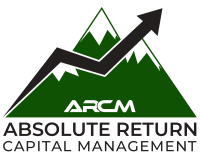
Absolute Return Capital Management
Please Log In for Company Contact InformationAbsolute Return Capital Management developed the ARCM Ionic Strategy with the primary objective of creating a Managed Futures strategy that delivers superior returns and lower drawdowns than a traditional investment portfolio. The Ionic Strategy is a “Whole Portfolio” multi-strategy concept. It is composed of 3 components: Long Equity Index Futures (such as SP500 and Nasdaq100), Long Fixed Income Futures (such as 30 yr. US Treasury Bonds), and the ARCM Diversified Momentum Component (described below). The Ionic Strategy’s purpose is to deliver the aggregate return/risk of a diversified Core Holdings Investment Strategy AND an Alternative Managed Futures Strategy within a single futures-based account. Given the negative correlation between the equity markets and both the bond and the ARCM Diversified Momentum Component, historical market data and trading history has shown that when one of the components is in a drawdown, the others are not. Additionally, testing and history show that the ARCM Diversified Moment Component adds crisis alpha to the portfolio given that it has peak performance when equities are suffering large losses. The program is thus designed to produce higher returns and lower drawdowns than any of the single components over time. Through the ARCM Diversified Momentum Component, the Strategy uses a systematic, quantitative approach, to trade and strictly manage risk across a current universe of 29 futures contracts in eight market sectors (Financial Instruments - Govt. Securities, Foreign Currencies, Stock Indexes, Grains, Metals, Energies, Meats, and Soft Commodities). All traded markets have significant volume and liquidity and are traded on major regulated Futures. Discretion to override the trading and risk management exists but will be used only in the most extreme circumstances. The trading principal may also use his discretion to trade in additional alternative markets than those listed herein. The Ionic Strategy derives its name from the principle of Ionic Bonding in Chemistry. At a high level, Ionic Bonding occurs when 2 opposite elements interact and bond together to form a new more stable element. An example is Sodium Chloride (NaCl) which is made up of Sodium (Na) and Chlorine (Cl). By themselves, both sodium and chlorine are strong and powerful elements, however, both are toxic if consumed by humans. When they are combined, the Ionic Bond takes place and they become NaCl, commonly known as table salt, an element that is safe and essential to the human body. The Ionic Strategy is similar to the chemical analogy in that the equity and bonds are very powerful but the occasional, significant drawdowns can make them toxic to a portfolio. Likewise, the ARCM Diversified Momentum Component is designed for considerable power, but again, significant drawdowns can occur. Given the negative correlation that exists between equities and both the bonds and the ARCM Diversified Components, combining these three products forms the Ionic Strategy, which should take advantage of the powerful underlying components while producing lower drawdowns than the individual components.
Industry Role:
FundManager
Strategy/Structure:
InvestmentCompany
Fund Manager Type:
ManagedFutures
Investment Listings
| Name | Sector | MTD ROR | YTD ROR | ANN ROR | |
|---|---|---|---|---|---|
| ARCM Ionic Strategy | ManagedFutures | Login | Login | Login | View Listing |
Company Posts & Updates
Managed Futures
ARCM Ionic Strategy
#Announcement
Office Locations
| # | Location | Address | |
|---|---|---|---|
| 1. | Deerfield, Illinois, US | 1121 Lake Cook Rd, Deerfield, IL 60015, USA - Suite P |
Executives and Employees
| # | Contact Info | Location |
|---|---|---|
| 1. |
Lawrence AbramsPresident
Lawrence Abrams has over 30 years of experience as a Futures, Options, and Derivatives trader and broker. Since beginning his career on the trading floor in Philadelphia in 1984, he has navigated a...
View Profile
|
Deerfield, Illinois, US |


